In case you missed it mid-February, the popular contraceptive YAZ®/Yasmin® was briefly in the news. Stories surfaced that indicated that numerous severe and life-threatening side effects caused by YAZ® (a formula built from two synthetic hormones — ethinyl estradiol and drospirenone) were downplayed to the extreme in Bayer’s high-end-production-value ads for the product. Even the FDA mandated “cleaned-up” versions of the ads managed to make the side effects sound incidental.
In the early 2000s, YAZ® hit the American market in a huge advertising blitz claiming that YAZ® was not only the primo, number-one birth control pill in the world (backed by studies), but also offered the additional benefits of eliminating acne and reducing the effects of PMS/PMDD. And in fact, YAZ® is still promoted that way on its website. Unfortunately, YAZ® comes with a host of side effects — all blithely laughed off at the end of the ads by young women admiring the wisdom of their friend, the “doctor.” And women responded (to the buy part, not the warning part) so much so that YAZ® quickly became the top selling birth control pill in America and Canada.
It’s now a few years down the road, and many of those women wished they had paid more attention to those laughed-off warnings. Users of YAZ® have reported everything from gallbladder disease to blood clots, not to mention liver damage, stroke, paralysis, nerve damage, heart attacks, cervical cancer, and the always exciting anaphylactic shock. And then the stories quickly faded from the news — pushed aside by events in the Middle East, and now Japan.
But out of sight, does not necessarily mean out of mind; lawyers have busily been working in the background. Sensing blood, they are now aggressively trolling the net for victims/clients — even setting up “YAZ Injury Legal Center” websites. Some estimates suggest that the total number of lawsuits filed may eventually exceed 25,000. In the meantime, Bayer acknowledges the problems on their website where they post the warning:
“BeYAZ™ [a variation of the original YAZ® formula] and YAZ® are associated with increased risks of several serious side effects, including blood clots, stroke, and heart attack. Women, especially those 35 and over, are strongly advised not to smoke because it increases these risks. In addition, BeYAZ™ and YAZ® contain drospirenone, a different kind of hormone that for some may increase potassium too much.”
And yet despite the lawsuits and dangers, Bayer continues with business as usual and even recently released a new birth control product called “Natazia™” based on the same concept, but using different synthetic hormones. To me, the stunning part of this story is not that it happened in the first place, or that Bayer is continuing with business as usual, but that people actually seem surprised.
How can you be surprised by synthetic hormones?
The dangers associated with HRT (hormone replacement therapy) for older women involving the administration of synthetic estrogen and synthetic progesterone (aka progestin) to relieve the symptoms of menopause, prevent osteoporosis, and reduce the risk of heart disease are now certainly widely known. And the medical community has even responded — somewhat — with the use of HRT dropping by 50% since the dangers were first publicized in the medical community. Coincidentally (and surprising no one in the alternative health community where the dangers of HRT have been gospel for several decades), there has been a measurable drop in the incidence of breast cancer directly correlating with the drop in HRT prescriptions. Amusingly (well, maybe that’s not the best word), the medical community takes credit for the drop in breast cancer as opposed to issuing a mea culpa for giving breast cancer to women by prescribing HRT in the first place. But that’s HRT, and we’re not talking about HRT today.
Birth control pills use essentially the same type of synthetic estrogen and progesterone hormones to prevent pregnancy and to treat PMDD (premenstrual dysphoric disorder) as are found in HRT treatments. And specifically, we’re talking about YAZ®, YAZmin®, BeYAZ™, and the newly released Natazia™ (who comes up with these names?) from your friendly people at Bayer. Incidentally, the term PMDD was not coined by gynecologists or obstetricians. It was, in fact, coined by psychiatrists and first appeared in the last major update of the Diagnostic and Statistical Manual of Mental Disorders, published in 1994. Then again, it’s probably no surprise to most women that severe PMS was actually considered a mental disorder for years, at least until the medical community figured out how to make money from it. In any case, the FDA finally sanctioned the term in 1999. The question one is compelled to ask, of course, is: “Why should anyone be surprised that using essentially the same synthetic hormones for PMDD and birth control that were known to cause problems when used for HRT turns out to be just as dangerous?”
Oh, and let’s not forget, as I mentioned earlier, that the people at Bayer who make YAZ® also recommend using it for the treatment of acne in young girls and for BeYAZ® as a folate supplement for pregnant woman to lower the risk of having rare neural tube birth defects in their children. (When you actually think about that marketing position for a moment, it hardly qualifies as a ringing endorsement for the effectiveness of YAZ® as a birth control pill.)
Steroid hormone pathways
In order to understand why the problems with YAZ® were so predictable from the beginning, it’s necessary to understand where hormones come from and the difference between natural hormones and synthetic hormones.
The first surprise, for most people, since they have been programmed to believe that cholesterol is bad for them, is to learn that all of the steroid hormones — every single one of them — come from cholesterol. As you can see in the chart below, cholesterol is the precursor to pregnenolone and, thus, to all the other steroid hormones. Pregnenolone is converted into progesterone and DHEA (dehydroepiandrosterone). DHEA is then converted in the ovaries and testes into the corresponding female and male hormones. In women, DHEA is converted in the ovaries into the estrogens: estrone, estradiol, and estriol. In men, DHEA is converted into testosterone. Note that men produce a small amount of estrogen in their testes and women produce a small amount of testosterone in their ovaries.
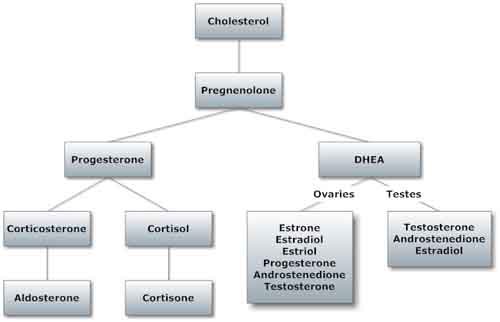
Now that we understand how the different hormones actually all derive from the same source, it should be no surprise to learn that their molecular structures are very, very similar.
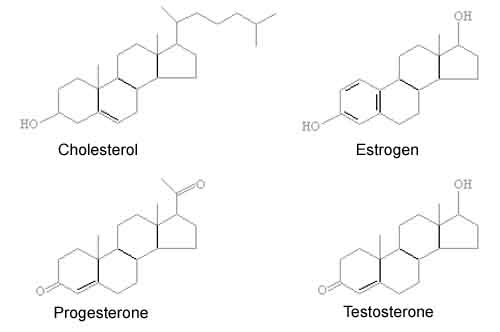
However, similar is not the same as identical. When it comes to hormones, small differences have huge consequences. So even though the structures of the above molecules are very similar, their functions could not be more different. Cholesterol repairs arterial walls and builds the brain; estrogen makes women; and testosterone makes men. These are huge differences. So, to repeat one more time, when it comes to hormones, small differences can profoundly change the impact on the body.
Which now brings us to the key point of this discussion: how similar are the synthetic versions of the hormones used in pharmaceutical products such as YAZ® to their natural counterparts?
And the answer is not very.
First let’s compare drospirenone, the progestin (synthetic progesterone) used in YAZ®, to natural progesterone.
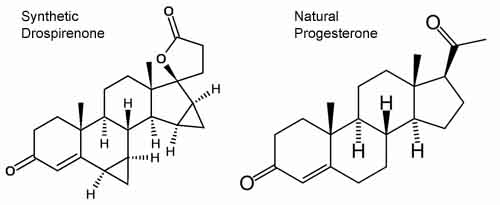
As we can see, the visual differences in molecular structure are significant — more significant, in fact, than the differences we saw when comparing estrogen to testosterone — the hormone that makes women VS the hormone that makes men. From this we can conclude that the synthetic drospirenone used in YAZ® is likely to behave quite differently in the human body than natural progesterone. But that’s not the only problem with YAZ®. As we’ve already discussed, YAZ® uses a synthetic estrogen (estradiol) hormone. So now let’s compare the synthetic ethinyl estradiol found in YAZ® to natural estradiol.

Again, the differences are significant — as is their performance in the human body, with severe health consequences. And as we view the evidence above, we are forced to ask, why would Bayer use synthetic progesterone and synthetic estrogen if they are so much more dangerous and no more effective than easily manufactured bio-identical hormones?
And one major part of the answer is money. A drug company cannot patent a bioidentical hormone since it is an exact copy of what nature produces. Only synthetic hormones can be patented. No synthetic hormone means no patent. And no patent means no huge profits since only with a patent can a drug company protect its market share.
 But it gets even worse. There are a couple of problems when you put estradiol in a pill. First, it’s not very stable. It tends to oxidize easily, which means it tends to have a short shelf life — not very good for the bottom line. And when you try to take estradiol orally, it tends to degrade in the digestive tract before it is absorbed. So you need to find a way to “protect” the estradiol molecule from the digestive process. Not to worry, the pharmaceutical companies have developed a neat workaround (unnatural though it may be) for such problems. In YAZ®, the ethinyl estradiol is enclosed within a beta-cyclodextrin (betadex) clathrate. A clathrate is a molecule that forms a “cage” around another molecule or molecules. The betadex clathrate in YAZ® is a Bayer-patented technology that protects the enclosed ethinyl estradiol molecule and stabilizes the product against oxidation. This patented technology enhances the product’s shelf life and allows more of it to come through the digestive process in good order.
But it gets even worse. There are a couple of problems when you put estradiol in a pill. First, it’s not very stable. It tends to oxidize easily, which means it tends to have a short shelf life — not very good for the bottom line. And when you try to take estradiol orally, it tends to degrade in the digestive tract before it is absorbed. So you need to find a way to “protect” the estradiol molecule from the digestive process. Not to worry, the pharmaceutical companies have developed a neat workaround (unnatural though it may be) for such problems. In YAZ®, the ethinyl estradiol is enclosed within a beta-cyclodextrin (betadex) clathrate. A clathrate is a molecule that forms a “cage” around another molecule or molecules. The betadex clathrate in YAZ® is a Bayer-patented technology that protects the enclosed ethinyl estradiol molecule and stabilizes the product against oxidation. This patented technology enhances the product’s shelf life and allows more of it to come through the digestive process in good order.
Visually, the final presentation of the synthetic estrogen “protected” inside its clathrate is a far, far cry from natural estradiol indeed.
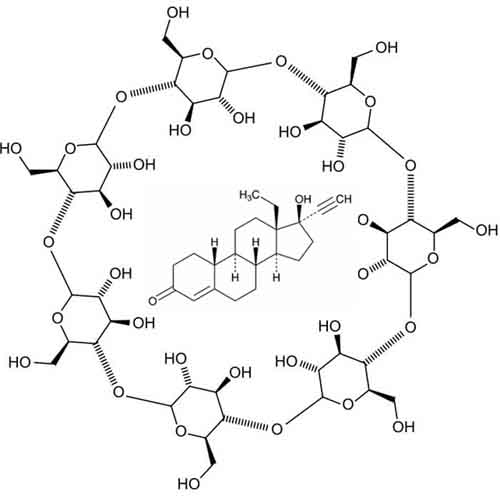
The consequences of using synthetic hormones
Of course, a key piece of this equation is the assumption that the synthetic hormones used in pharmaceutical drugs are more dangerous than natural or bioidentical hormones. And, in fact, it’s not an assumption; it’s a fact. So let’s talk about the differences between synthetic and natural when it comes to progesterone and estrogen.
Progesterone
I’ve covered this issue in detail in Lessons from the Miracle Doctors, so I’ll just give just a quick summary here.
Most HRT programs, birth control pills, and PMDD hormone treatments include a progestin component along with estrogen compounds. Progestins — sometimes called progestogens — are synthetic forms of progesterone that are given to reduce the possibility that the estrogen by itself will cause cancer of the uterus. Progestins are “modeled” after natural progesterone, but are “modified” to make them patentable. Natural progesterone cannot be patented, which means it is not useful to the pharmaceutical companies. Progestins are commonly prescribed under the brand names Provera and Depo-Provera. Other common brand names are Norlutate, Norlutin, and Aygestin. In YAZ®, the progestin is known as drospirenone. The bottom line is that it is this “slightly” modified, synthetic progesterone that your doctor is most likely prescribing for you when she tells you she’s giving you progesterone. This synthetic form of progesterone carries a whole range of serious side effects, including depression, birth defects, increased body hair, acne, risk of embolism, decreased glucose tolerance, and allergic reactions. In exchange for these significant side effects, progestins do offer some protection against endometrial cancer and a very modest, short-term increase in bone formation.
Natural progesterone on the other hand, when used as directed in small amounts, has no known side effects. Incidentally, natural progesterone is best utilized by the body when administered transdermally with a skin cream that contains approximately 500 milligrams (mg) of natural progesterone per ounce and offers the following potential health benefits:
- Improves bone formation. According to Dr. John R. Lee, author of What Your Doctor May Not Tell You about Menopause, natural progesterone may significantly improve bone formation by as much as 15 to 35 percent. This is unique to natural progesterone — estrogen supplementation does not increase bone formation but merely slows the rate of loss for a 5-year period around the time of menopause. And synthetic progestin only mildly increases bone formation.
- May help protect against endometrial and breast cancers.
- Relieves symptoms of PMS and menopause.
- Normalizes libido.
- Improves the body fat profile.
- Improves sleep patterns.
- Helps relieve migraine headaches.
The choice is clear: you want natural or bioidentical progesterone over synthetic progestins.
Estrogen
There are three types of estrogen in the human body.
- Estrone is the form of estrogen most often associated with women after menopause.
- Estradiol is the form of estrogen most often associated with perimenopausal women.
- Estriol is a weaker form of estrogen produced by the breakdown of other forms of estrogen in the body. This is the form of estrogen most commonly given in Europe. It is the only form that is thought not to cause cancer.
For the moment, let’s set aside the fact that ethinyl estradiol, the estrogen used in YAZ® is a synthetic estrogen with a molecular structure not found in nature. We’ll get back to that in a moment. And let’s deal with an even more serious issue — that, as we’ve already discussed, there are indeed three types of estrogen in the human body. This is significant because research has shown that the average ratio of serum estrogen in the female body is 90 percent estriol, 7 percent estradiol, and 3 percent estrone. (This includes the various estrogen metabolites, such as hydroxyestrogen and the 16a-hydroxylated estrogens.) The ratios are important once you understand that both estrone and estradiol are pro-carcinogenic, whereas estriol is cancer protective. So, why would you want to use an estrogen supplement that has only the pro-carcinogenic estrogens and not a single drop of the anti-carcinogenic estrogen that normally represents 90 percent of the body’s total? And as its name indicates, ethinyl estradiol is a 100% pure estradiol supplement — and not bio-identical at that. Side effects associated with the use of ethinyl estradiol (either alone or in combination with drospirenone) include:
- Uterine (endometrial) cancer
- Ovarian cancer
- Vaginal bleeding
- Stroke
- Dementia
- Blood clots
- DVT
- Heart disease
- Breast cancer
Incidentally, Premarin®, the pharmaceutical estrogen of choice a few years back, has similar problems — although it does contain bioidentical estrone and estradiol. First, it contains no estriol, so it pushes the body into a cancer promotive, rather than a cancer protective, mode. Not good. But Premarin® also has another problem, unique unto itself. Premarin® is extracted from the urine of pregnant horses, which is why the estrone and estradiol in it are bioidentical to that found in the human body. Unfortunately, it also contains close to a dozen estrogens that are specific to horses such as equilin, 17 alpha-dihydroequilin, and equilenin. Another way of looking at this is that those “extra” estrogens are specifically designed to make you gallop and whinny. And that can’t be good for you.
The bottom line when it comes to estrogen is that in those cases where estrogen supplementation is warranted, insist that your doctor give you either “true triple estrogen” (and insist that it be in a ratio similar to the 90-7-3 mentioned above) or use pure estriol cream. Studies have shown that the higher the ratio of estriol in the body versus the amount of estrone and estradiol combined, the lower the risk of breast cancer.
Conclusion
For years, I have been consistently cautious when recommending the use of formulas that modify the body’s hormonal balance; and certainly the misuse of hormones by athletes and the medical community in the last decade has not helped change that point of view.
Nevertheless, once you throw out all of the preconceptions and look at the issue objectively (and look at the real results, both short and long term), the case for selectively correcting (or even altering in some cases) your hormonal balance becomes compelling — with a few caveats:
- Only selected hormones should be “adjusted” without a doctor’s guidance.
- Use only natural hormones (or hormones that are chemically identical to the natural hormone). Hormones are produced from many different sources: some are derived from animals, some from plants, some are created in laboratories, and some are created through changing the DNA of bacteria or single-celled plants so that they produce the desired hormone. As it turns out, for hormones, the source is not the real question. The real question happens to be: is the hormone a perfect match for the hormone found in our bodies? As we have learned, things are not always what they seem.
- Use only therapeutic or homeopathic doses. Therapeutic doses mimic the amount of hormone your body normally produces. Pharmacological (or medicinal doses) are substantially higher than therapeutic doses and are often accompanied by significant side effects. Never use pharmacological doses without a doctor’s guidance.
 And by all means, stop using birth control pills based on synthetic hormones. And don’t be suckered by marketing ploys such as Bayer’s Qlaira®.
And by all means, stop using birth control pills based on synthetic hormones. And don’t be suckered by marketing ploys such as Bayer’s Qlaira®.
Qlaira® was announced by Bayer after the furor surrounding YAZ® first surfaced. Qlaira® was designed to be marketed as a “natural” contraceptive, for those of you who get frightened after hearing bad things about YAZ®. But Bayer’s claim to “naturalness” is deliberately misleading. Only the estrogen in it is bioidentical (or almost so), but the formula still relies on a synthetic progestin, with all its associated problems, for its progesterone component. And on top of that, because it still relies on pure estradiol for its estrogen content, it will throw off the body’s natural balance of estriol, estradiol, and estrone — once again putting you at risk.
Shameless!

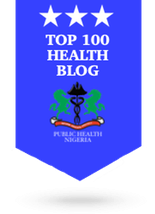


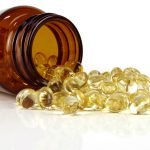






This article makes great
This article makes great points BUT what’s a girl to do? I’ve taken Yaz for years (so far so good). Without it I get large painful acne cysts and heavy painful periods. Not to mention the birth control function. I am vegan and exercise regularly and have found no other way to alleviate these symptoms.
The painful periods would
The painful periods would almost certainly be comletely eliminated by natural balancing of the ratios between estradiols and progesterones. I would start with a complete saliva test to determine the starting point. Dr. John Lee literally wrote the book on this. Here's a link to begin learning about saliva testing and why it is the best way to begin balancing, for men or women: http://myhealthoptimizer.com/why-saliva-testing/ If you want to learn more, I would read Dr. John Lee's amazing book: "What Your Doctor May Not Tell You About Breast Cancer". Don't let th title fool you. It is about much, much more than breast cancer. It really explains the whole hormone mystery. I am not sure what to say about birth control. I wish I had a good answer, but I do not. As far as the acne goes, eliminating foods to which one has subtle allergies, reducing sugars, and several other nutritional adjustments will usually do the trick. Hope I have been of some help.
Michelle, your acne may also
Michelle, your acne may also be due to diet, I found out after years of trying everything that dairy and wheat products can lead to acne, especially the deeper cysts. I cut out dairy and my face cleared within weeks.
This is a terrific article.
This is a terrific article. Thank you Jon Barron for writing it and posting it. Unfurtunately, many people, both patients and their doctors seem not to understand this material. This is elegantly and clearly explained.
Thank you.
Maybe next, it would be valuable to include a good explanation about why saliva testing is the way to determine hormone levels. Blood testing does not work for most hormone testing. Saliva testing does. It is what I routinely use for my clients.
So as Michelle said what's a
So as Michelle said what’s a girl to do especially for birth control, is there any natural alternative. Please help
Without the pill, my face
Without the pill, my face skin is oily and breaks out horribly. I wish there was a natural formula for the birthcontrol pill.
What are the options to
What are the options to replace birth control pills and is there any natural methods for birth control and is there any safe temporary methods for males for birth control?
Michelle and others,
ACne and
Michelle and others,
ACne and heavy periods are often a dietary issue such as gluten and casien (wheat and dairy) as “guest” above mentioned and watching what you eat with a food diary may help you figure that out and eliminate other problems too.
But, often low progesterone and/or high testosterone in women cause acne, weight gain and heavy periods. High testosterone in women is often a sign of insulin resistance in women and usually from too much sugar and refined carbs, especially the week or two before your period up until it starts. And natural, bio-identical progesterone creams are available over the counter in almost all health food stores. Do some research or better yet, go to your local medical ND physician (Naturopathic Doctor who can prescribe). Try http://www.CalND.org in California or http://www.Naturopathic.org in other states and Canada. Good luck!
the EU approved Yaz only in
the EU approved Yaz only in 2008, in a few month there were 2 deaths in Swiss, myself had to take it for 3 months and ended up with severe side effects that lead near to paralysis.
Unfortunately old pills that were natural keept their names but not their composition, just checked for RG’s Rigevidon – 16 years ago it was snake hormone, now is sinthetic – that leaves us without choise.. unfortunately 16 years ago if you had your hormones in balance you could use other contraceptive methods, now we have so many pollutants that i can’t rely on that anymore.
Interesting article, but
Interesting article, but wonder what is best for menopausal women to combat vaginal atrophy and dryness.
Thank you.
Natural Radiance makes a
Natural Radiance makes a wonderful estriol oil product for vaginal dryness. My patients love it. http://www.naturallybetter.net
So are there any
So are there any contraceptives out there featuring only bioidentical hormones ?
Michelle, you may also find
Michelle, you may also find that drinking green smoothies will help with your acne, along with a host of other ailments/disease in the body. Read ‘green for life’, i cannot recommend it enough.
What i am wondering though is, what would a person recommend to young women as an effective form of birth control aside from abstinence?
As far as birth control, try
As far as birth control, try ovulationcalendar.com. Track your cycle for a few months, put in your preferences (trying to conceive, trying (not) to conceive, etc. and watch the magic at work. It amazes me that women feel they need to take massive doses of toxic chemicals every month to avoid the one or two days that they can actually get pregnant. Not enough faith yet in tracking your cycle? use the today sponge or some of the other OTC methods until your faith grows…they have that wierd ingredient Nonoxynol 9 or something but at least you have control of how long it’s in your body.
I was just recently
I was just recently prescribed Estrace Vaginal Cream for the issues in the above question. I would like to see the answer you gave Helen and any other comments you may have.
Thank you.
Hi Michelle,
Do some
Hi Michelle,
Do some research into wild carrot seeds as a birth control herb. Raspberry leaf also helps regulate menses. Papaya seeds are also another natural contraceptive. Diet of course is another.
Good luck!
Love the article, I have
Love the article, I have never used birth control pills & have been using natural progresterone cream since menopausal. I would like more info on the Estriol cream—should a menopausal woman use it? if for no other reason than to reduce the chances of cancer? So far, pretty well on the progesterone alone.
I think there should be a ban
I think there should be a ban or strict regulations on the prescribing of synthetic hormones no matter how much money the pharmaceutical companies are making while they are creating health issues which in turn require more meds to alleviate.
I took birth control pills on and off during my 20’s for contraception. The pills seemed to be causing side effects such as bloating, breast tenderness, depression, weight gain, severe headaches, and a few other unpleasant things. After taking them for a few years I switched to a non-hormonal type of contraception. Suddenly I had issues with ovarian cysts, breast cysts, and endometriosis. I never had any of those issues before taking the pills. The cure? Go back on the birth control pills. After going back and forth on and off the pills I quit them altogether by the time I was 30 and endured the pain of the other issues. When I went off the pills, I ceased menstruating altogether for about 8 months (not pregnant). What did the doctor do to jump-start my cycle? Give me progesterone. By this time I realized there were natural varieties available and took a natural version of progesterone for a week or so to resume my cycles. I strongly believe that the synthetic hormones caused my propensity for cysts and the extremely painful endometriosis. I ended up having to have a hysterectomy and my ovaries removed at 41 and entered into instant menopause which was not bad at all especially considering it ended my pain. BUT, the first thing they did before I even left the hospital was prescribe me synthetic estrogen just in case I had a hot flash or something. No thank you. I’ll take the hot flashes and figure out another way to deal with the loss of hormonal activity.
Ladies, my advice to anyone who has never taken oral contraceptives is to seriously consider the other available options and maybe even pair several such as spermicides with condoms or diaphragms. Condoms generally only hurt people who are allergic to latex. They are probably a better idea in many ways since they do help prevent certain STDs. In my opinion any chemicals that can turn on and shut off natural hormonal and bodily functions cannot be healthy especially with long term use. I found this article very interesting and now I understand a little better that my own instinct about these drugs was probably correct.
After reading this article and the questions and advice from the other women, I think I will check out some of the natural hormonal creams to alleviate some of the risks associated with early menopause, since I’m still in my early 40’s. Thanks for sharing.
To those who have problems
To those who have problems with acne – get rid of all processed foods and reduce dairy for 3 weeks and you will be amazed!
For all of the women curious
For all of the women curious about nonhormonal birth control methods, you can look up female barrier methods such as the Femcap or a diaphragm or use condoms. I am a member of a Yahoo group with the largest collection of information/support about non-hormonal birth control methods, specifically female barrier methods. Here is the link, you have to request to join:
http://groups.yahoo.com/group/DiaphragmsAndCaps/
If you choose to use a barrier method as regular birth control, I would also recommend becoming familiar with Toni Wechsler’s book Taking Charge of Your Fertility and the Fertility Awareness Method, which teaches you how to track your cycle with basal body temp changes, cervical fluid changes, and cervical position changes. If you want to go natural, you definitely have to be willing to get very,very personal with “yourself.”
There are also fertility monitors that can help with tracking your cycle, such as the Cyclotest and Lady Comp.
I will say, depending on where you live, it can be very difficult to find a gyno that will be open to non-hormonal options. Most of my doctors tried to get me to use an IUD when I said I’d had enough of the pill… I took Yaz for 2 years and suffered from chronic yeast infections and bladder discomfort (I had a pretty bad systemic yeast infection, most likely from the imbalance brought on by Yaz). I have been off of Yaz since March of 2010 and completely off HBC since Sept. 2010, and I am just now beginning to feel like myself again.
I hope this helps, I will never regret my decision to get off of hormones!
Thank you so much for this
Thank you so much for this artical! Its really helped a lot
Drug company hormones are
Drug company hormones are poison to me. Birth control pills turned my fingers blue and gave me migraines. Hormone replacement, Vivelle and Estrogel gave me a ravenous appetite and water retention. I gained 10 pounds in 2 weeks. I can only tolerate compounded hormones without suffering negative side effects. I have to be on something because I suffer greatly from menopusal problems. This means extremely dry vagina, 22 drenching sweats a day,bilateral frozen shoulder, dry eyes and insomnia.
First, progestins are not
First, progestins are not modeled after natural progesterone. We got “the pill” from a scientist in Germany who discovered that if he injected sows (female pigs) with testosterone he could prevent ovulation…and the rest is history. All of the original progestins (they only use a word that looks similar to progesterone to fool women) were derivatives of testosterone, and most 1st, 2nd and even 3rd generation progestins have ANDROGENIC actions. the 4th generation progestins, the one in YAZ drospironone, is not a model of testosterone, it is a derivative of spirolactone, a potassium sparing diuretic drug. This potassium sparing component might be why gall bladder issues arise. It has anti-androgenic properties. Bayer’s Natazia was developed for endometriosis and heavy bleeding, and the progestin is called Diengoest. It also has anti-androgenic properties and does not affect glucose metabolism like other earlier generation androgenic progestins do. All OC’s mess with all kinds of endocrine functions in your body. Sex hormone binding globulin, most carbohydrate and lipid metabolism, bone formation, you don’t get high levels of progesterone every month if you don’t ovulate and progesterone is a promoter of GABA and reduces anxiety – it is your happy hormone. Women do not get the education they need before deciding to use these drugs.